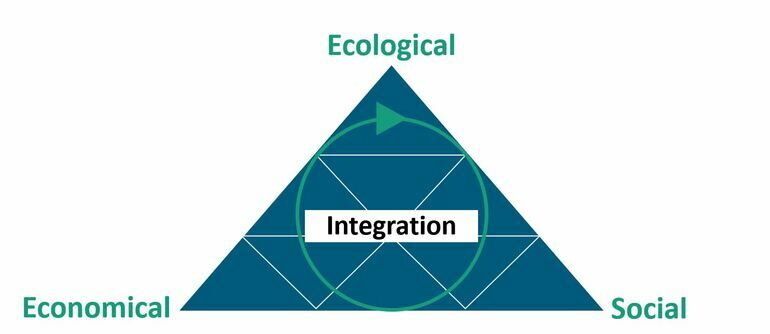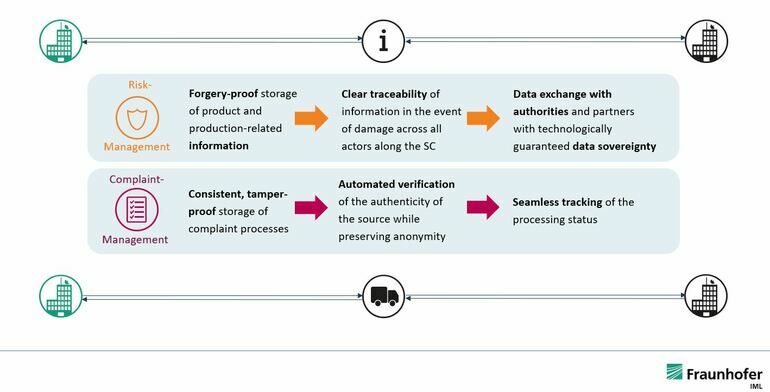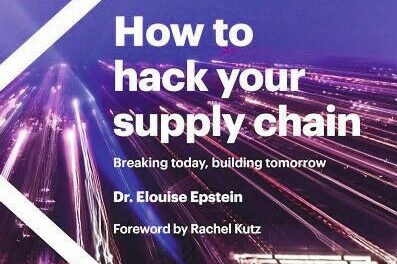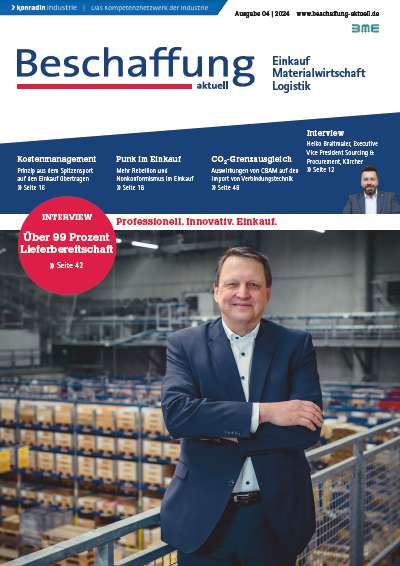Given the numerous current disruptions with highly disruptive characteristics (primarily the pandemic and the Ukraine war), as well as the increasing number of continuously observed risks (e.g. cyber-attacks, geopolitical tensions, CSR risks), the strategic design of supply chains is becoming increasingly important. It allows for direct conclusions regarding the robustness and innovative power of a company.
Supply Chain Design in Uncertain Times
In order to better assess the risks and potentials in supply chains, sustainability, risk, and innovation aspects have been increasingly added to the selection of suppliers in recent years, in addition to the traditional procurement goals of cost, quality, and time. At the same time, companies are introducing more and more digital technologies and tools, thereby increasing the digital maturity of the companies. Procurement is aware of its pivotal role, but the past crises have revealed two significant insights:
I. The integration and expansion of well-known, yet still relatively young goals such as sustainability and innovation in procurement must be consistently driven forward. The degree of integration of these dimensions is more decisive than ever for the competitiveness of the company in complex value networks with ever-increasing requirements for companies and a shortening of their reaction and adaptation times to external events.
II. As a result of the often necessary „firefighting“ in recent years, procurement organizations are returning to the prioritization of familiar objectives. The traditional procurement goals of cost, quality, and speed dominate, while new criteria such as innovation and sustainability are ranked lower due to the continued cost-driven evaluation of procurement performance, especially in times of crisis.
Designing sustainable supply chains requires economic incentives and technological support
Companies in Germany and Europe are and will be increasingly required to disclose the environment and impacts of their economic activities. This not least because of the German Supply Chain Due Diligence Act (Lieferkettensorgfaltspflichtengesetz), which came into effect on January 1, 2023 – and is still being viewed critically, particularly in medium-sized companies. At the same time the EU is driving a similar initiative with the EU Supply Chain Act, which is expected to implement even stricter regulation.
Implementing these new requirements always takes place in the tension field of the so-called sustainability triangle. Improvement in the „ecological“ and „social“ dimensions will only be truly sustainable by also considering the “economic” perspective and goals. Because implementation is not free of charge and requires investments as well as economic incentives for companies in addition to regulations. Therefore, the improvement of the ecological and social dimensions must always include the economic dimension as well (Figure 1).

Bild: Fraunhofer IML
With the advancing maturity of digital technologies, a central approach for simultaneous consideration of all three target dimensions is the use of new technologies. They enable intrinsic benefits in terms of transparency and optimization of supply chains and, as additional benefit, help meet the requirements of new regulatory demands, such as the Supply Chain Due Diligence Act. In this context, the formulated sustainability strategy of procurement organizations could be: Technology-enabled transparency and optimization of supply chains to avoid disruptions while meeting social and sustainability requirements. For example, supply chains in the agricultural sector were originally not designed with the goal of transparency and visibility but rather to efficiently coordinate the various inputs for the production and distribution of products. Today, the agricultural sector is one of the industries with the highest adoption rate of digital solutions to achieve supply chain transparency.
Sustainable and resilient through blockchain technology
Blockchain in one of the technologies that offers a promising opportunity for technology-enabled transparency. The results of a current research project involving the Fraunhofer IML, which classifies blockchain solutions according to application objectives and industries, indicate a strong concentration of use cases in the area of transparency regarding production, transportation, and storage conditions. The characteristics of the technology ensure sovereignty over one‘s own data and thus create the necessary trust to share sensitive company data. Through the clear allocation of defined roles and their access rights, down to the level of data fields, they cannot be compromised or unlawfully read at any time. Cross-company networking, while maintaining business secrets, can be built up in an application-specific manner.

Bild: Fraunhofer IML
These potentials are the basis for software products such as the blockchain-based digital product passport, which is currently being tested by Dr. Axel T. Schulte and his team at the Fraunhofer IML in Dortmund. With this passport, relevant data, such as CO2 data, will be captured and evaluated from the beginning of the value creation process, thus contributing to greater transparency in supply chains. The blockchain technology can also make a valuable contribution to the efficient use of resources by enabling companies to access new business models or even enter the shared economy.
In 3D printing networks, for example, decentralized production capacities can already be securely utilized. Network participants forgo the establishment of their own resources and instead book and pay for available production capacities on a blockchain-based platform. The use of smart contracts guarantees demand-oriented and compliant transactions for all actors. This application scenario is also being addressed in a current research project at Fraunhofer IML.
Conclusion
Having full awareness of the possibilities of new technologies and evaluating them for the company must be more than ever the task of procurement. This is also and particularly the case with the Blockchain and Distributed Ledger technology. The development and integration of the blockchain-based product passport, which contributes to the implementation of the Supply Chain Due Diligence Act by collecting necessary data for compliance with CSR guidelines throughout the value creation process, can be a part of this. At the same time, procurement can develop alternative procurement strategies based on new technologies and integrate them profitably into existing procurement concepts. If successful, procurement will be making valuable, urgently needed pioneering work for the entire company.
More Informations: Distributed Data Storage in Decentralized Networks
Thanks to distributed data storage, each partner can verify the completeness and tamper resistance of the information at any time, which ensures security and additional trust in the data. This approach of distributed data storage in a network is an implementation of the concept known as „Distributed Ledger Technology,“ which represents decentralized data storage, in contrast to a single data source at a central location. By constantly verifying each block by all network participants, a chain of information confirmed in its tamper resistance is created – the blockchain. Direct intermediaries, i.e., mediating third parties standing between the actual actors, are no longer necessary in these decentralized exchange concepts. Each actor has a current, constantly synchronized and trustworthy version of the data available (single point of truth).
Autors:
Dr. Axel T. Schulte
Department Head, Department of Procurement and Finance in Supply Chain Management, Fraunhofer Institute for Material Flow and Logistics (IML)
Natalia Broza-Abut
Team Leader, Department of Procurement and Finance in Supply Chain Management, Fraunhofer Institute for Material Flow and Logistics (IML)
Tobias Jornitz
Research Associate, Department of Procurement and Finance in Supply Chain Management, Fraunhofer Institute for Material Flow and Logistics (IML)











